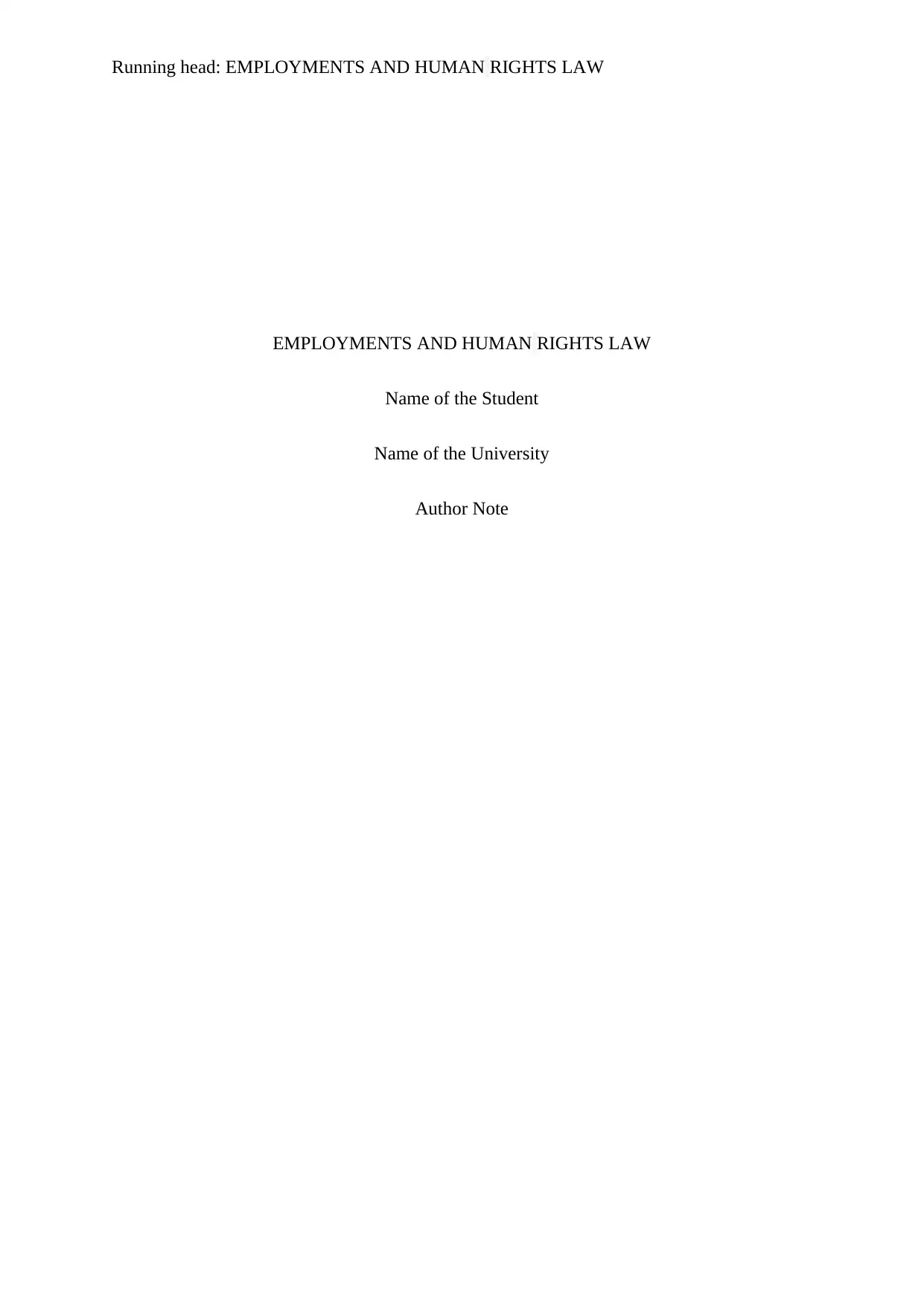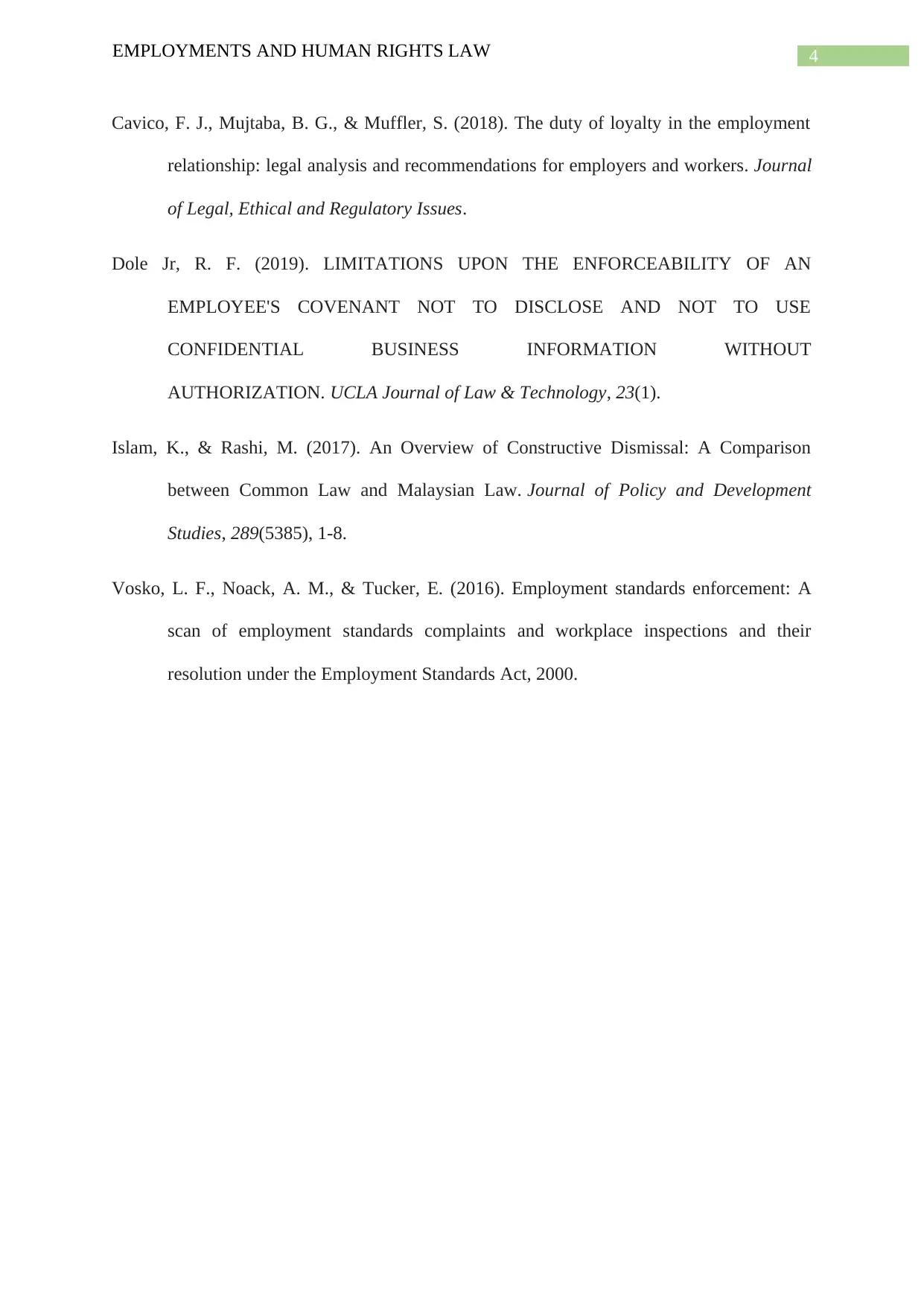Employment Law: Just Cause, Termination, and Obligations
VerifiedAdded on 2022/09/15
|5
|884
|20
Homework Assignment
AI Summary
This assignment delves into key aspects of employment and human rights law, addressing critical concepts like just cause for dismissal, employer obligations under the Employment Standards Act (ESA) and Common Law, and constructive dismissal. It explores the grounds for just cause, including dishonesty, disobedience, and conflicts of interest. The assignment outlines employer responsibilities regarding termination notice, severance pay, and providing a safe work environment. It also covers the implications of constructive dismissal, where changes in employment terms lead to an employee's departure, and post-employment obligations, such as maintaining confidentiality of trade secrets and customer lists. The analysis encompasses both general employees and fiduciary employees, highlighting their differing responsibilities and the legal principles governing these relationships. The assignment provides a detailed overview of the legal framework surrounding employment termination, employee rights, and employer duties.
1 out of 5










![Employment Law Assignment - [University Name] - [Course Name]](/_next/image/?url=https%3A%2F%2Fdesklib.com%2Fmedia%2Fimages%2Ffd%2F12efd02d310f4504baf138e9d320c512.jpg&w=256&q=75)
![[object Object]](/_next/static/media/star-bottom.7253800d.svg)